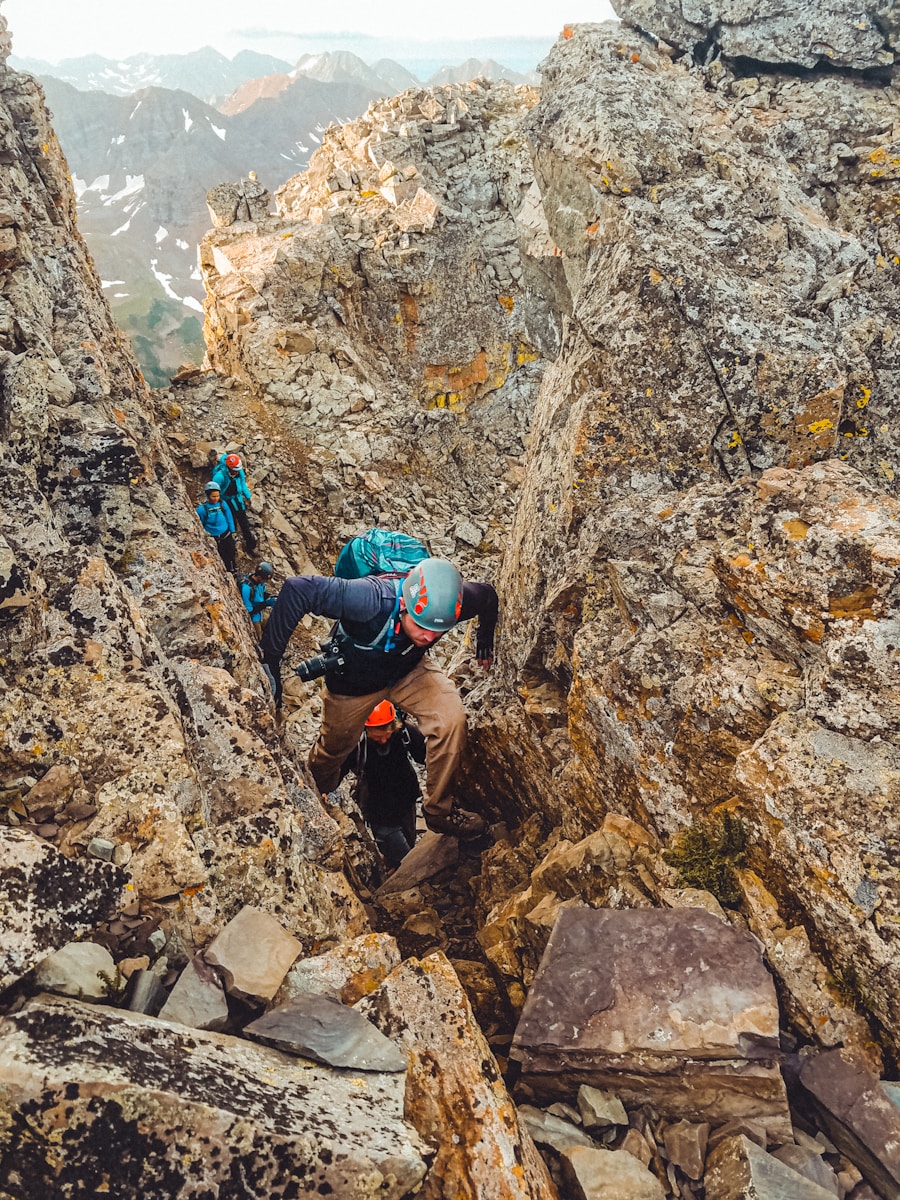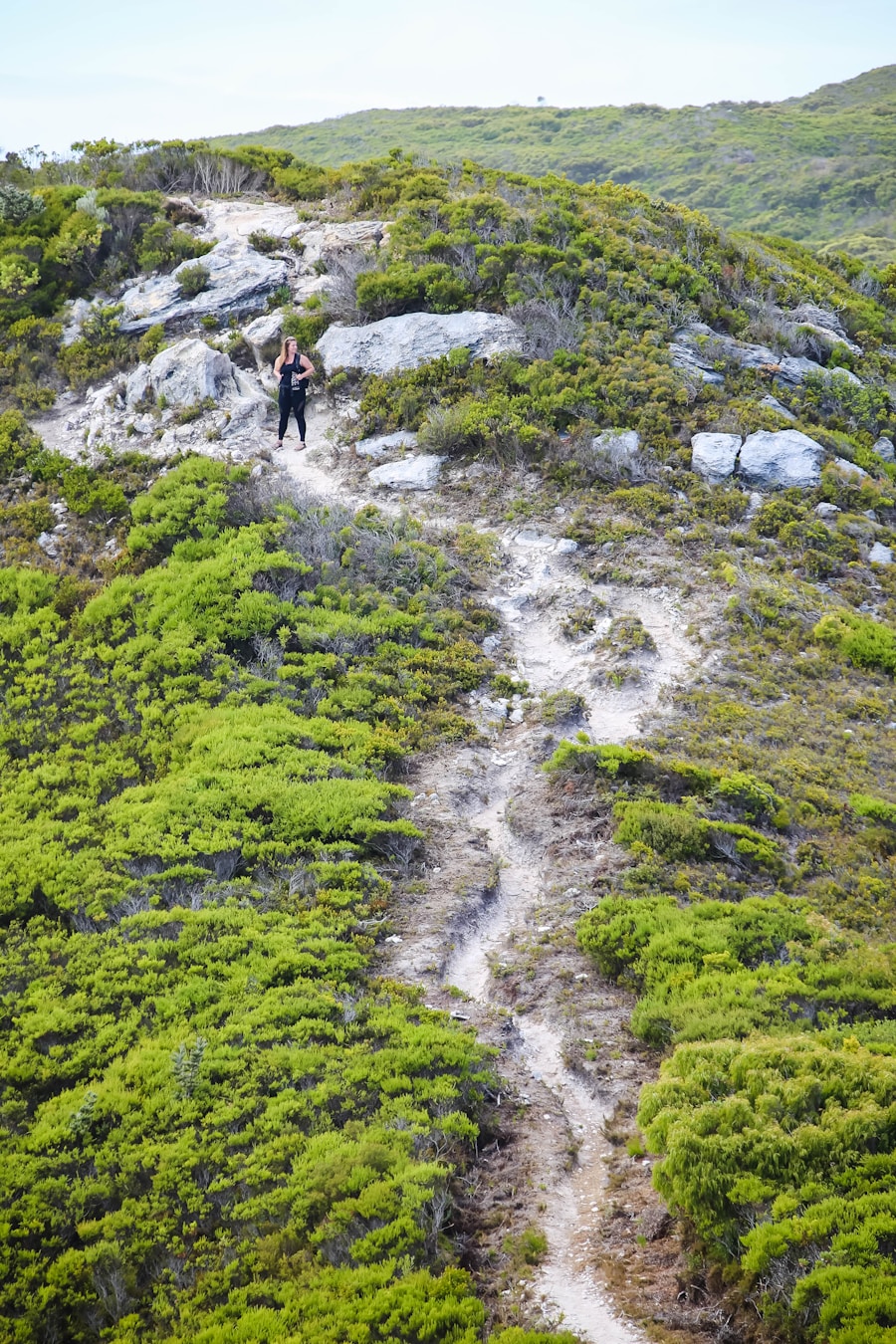Scrambling is an exhilarating outdoor activity that lies somewhere between hiking and climbing. It involves navigating rocky terrain, steep slopes, and sometimes even vertical faces, using both your hands and feet for support. Unlike traditional climbing, which often requires specialized equipment and techniques, scrambling typically allows for a more spontaneous and fluid approach to movement.
The essence of scrambling is to traverse challenging landscapes while enjoying the thrill of adventure and the beauty of nature. It can be done in various environments, from rugged mountain ranges to coastal cliffs, making it a versatile pursuit for outdoor enthusiasts. Understanding the grading system used in scrambling is crucial for anyone looking to engage in this activity.
Routes are often classified based on their difficulty, with grades ranging from easy scrambles that require minimal technical skill to more advanced routes that demand a higher level of experience and physical fitness. For instance, a Grade 1 scramble may involve simple rock hopping and minimal exposure, while a Grade 3 scramble could require the use of hands for balance and support on steeper sections. Familiarizing yourself with these classifications will help you choose appropriate routes that match your skill level and comfort zone.
Key Takeaways
- Scrambling involves using hands and feet to climb steep terrain and requires a good level of fitness and agility.
- Safety tips for scrambling include checking weather conditions, informing someone of your plans, and carrying essential safety gear such as a helmet and first aid kit.
- Essential gear for scrambling adventures includes sturdy hiking boots, a helmet, a harness, and a rope for more technical routes.
- Finding the best scrambling routes and trails can be done through guidebooks, online resources, and local outdoor clubs and organizations.
- Improving scrambling skills can be achieved through regular practice, taking a scrambling course, and seeking mentorship from experienced scramblers.
Safety Tips for Scrambling in the Wilderness
Safety is paramount when engaging in scrambling, as the risks associated with navigating rocky terrain can be significant. One of the most critical aspects of safety is assessing the weather conditions before embarking on a scramble. Sudden changes in weather can lead to treacherous conditions, such as wet rocks that become slippery or fog that obscures visibility.
Always check forecasts and be prepared to alter your plans if conditions are not favorable. Additionally, it’s wise to start early in the day to ensure you have ample daylight for your adventure, as scrambling can take longer than anticipated. Another essential safety tip is to familiarize yourself with the terrain and route before you set out.
This can involve studying maps, reading guidebooks, or even using GPS technology to plot your course.
Knowing the layout of the land can help you anticipate challenges and identify potential hazards. Moreover, it’s advisable to scramble with a partner or group whenever possible.Not only does this provide an extra layer of safety in case of an emergency, but it also allows for shared experiences and encouragement during challenging sections of the route.
Essential Gear for Scrambling Adventures

The right gear can significantly enhance your scrambling experience, providing both safety and comfort as you navigate challenging terrain. Footwear is perhaps the most critical piece of equipment; a good pair of approach shoes or lightweight hiking boots with excellent grip and ankle support is essential. These shoes should be designed to handle rocky surfaces while providing enough flexibility for foot movement.
Additionally, consider wearing gaiters to keep debris out of your shoes and protect your ankles from scrapes. Beyond footwear, other essential gear includes a well-fitted backpack to carry your supplies, such as water, snacks, and a first-aid kit. Hydration is crucial during any outdoor activity, so carrying enough water or a hydration system is vital.
Depending on the difficulty of the scramble, you may also want to bring climbing gear like a harness, rope, or carabiners for more technical sections. A helmet is advisable in areas where rockfall is a risk. Finally, don’t forget navigation tools such as a map and compass or a GPS device to help you stay on track.
Finding the Best Scrambling Routes and Trails
| Route/Trail Name | Location | Difficulty Level | Distance (miles) | Elevation Gain (feet) |
|---|---|---|---|---|
| Angel’s Landing | Zion National Park, Utah | Difficult | 5.4 | 1,488 |
| Half Dome Trail | Yosemite National Park, California | Very Difficult | 14.2 | 4,800 |
| Delicate Arch Trail | Arches National Park, Utah | Moderate | 3.0 | 480 |
| Devil’s Bridge Trail | Sedona, Arizona | Moderate | 4.2 | 564 |
Finding suitable scrambling routes can be one of the most rewarding aspects of the sport. Many regions have established scrambling areas with well-documented routes that cater to various skill levels. Guidebooks specific to scrambling often provide detailed descriptions of routes, including difficulty ratings, estimated times, and points of interest along the way.
Online resources such as hiking forums and websites dedicated to outdoor activities can also be invaluable for discovering new routes and reading firsthand accounts from other scramblers. Local outdoor clubs or organizations often host scrambling events or maintain lists of recommended routes in their area. Engaging with these communities can provide insights into lesser-known trails that may not be widely advertised but offer incredible experiences.
Additionally, social media platforms have become popular venues for sharing scrambling adventures; many enthusiasts post photos and route descriptions that can inspire others to explore new areas. When selecting a route, consider factors such as your skill level, physical fitness, and the time you have available to ensure an enjoyable experience.
How to Improve Your Scrambling Skills
Improving your scrambling skills requires practice, patience, and a willingness to learn from each experience. One effective way to enhance your abilities is by gradually increasing the difficulty of the routes you choose. Start with easier scrambles that allow you to build confidence and technique before tackling more challenging terrain.
As you progress, focus on developing specific skills such as foot placement, balance, and body positioning. These elements are crucial for maintaining stability on uneven surfaces and navigating steep sections effectively. Another valuable approach is to seek feedback from more experienced scramblers or instructors who can provide tips on technique and safety practices.
Participating in workshops or guided scrambles can expose you to different styles and methods that may improve your performance. Additionally, practicing basic climbing techniques can be beneficial; even if you don’t plan on climbing regularly, understanding how to use your body effectively on vertical surfaces can translate well into scrambling scenarios.
The Mental and Physical Benefits of Scrambling

Physical Benefits
Physically, scrambling provides an excellent workout that engages multiple muscle groups while improving cardiovascular fitness. The varied terrain requires strength, agility, and endurance as you navigate rocks and steep inclines. Over time, regular scrambling can lead to increased muscle tone, improved balance, and enhanced overall fitness levels.
Mental Benefits
Mentally, scrambling fosters resilience and problem-solving skills as you encounter challenges along the way. The need to assess risks and make quick decisions cultivates a sense of confidence that can translate into other areas of life.
Reducing Stress and Improving Well-being
Moreover, spending time in nature has been shown to reduce stress levels and improve mental well-being. The combination of physical exertion and immersion in beautiful landscapes creates a powerful antidote to the pressures of daily life, allowing individuals to return from their adventures feeling rejuvenated and inspired.
Environmental Responsibility While Scrambling
As outdoor enthusiasts, scramblers have a responsibility to protect the natural environments they explore. Practicing Leave No Trace principles is essential for minimizing impact on fragile ecosystems. This includes staying on established trails whenever possible to prevent erosion and damage to vegetation.
Additionally, it’s important to pack out all trash and waste, ensuring that natural areas remain pristine for future visitors. Wildlife encounters are common during scrambles; thus, it’s crucial to respect animals’ habitats by observing them from a distance and avoiding feeding them. Disturbing wildlife can have detrimental effects on their behavior and survival.
Furthermore, being mindful of fire regulations is essential; if fires are permitted in certain areas, ensure they are contained and fully extinguished before leaving the site. By adopting environmentally responsible practices while scrambling, individuals contribute to the preservation of these beautiful landscapes for generations to come.
Joining Scrambling Groups and Communities for Support and Guidance
Joining scrambling groups or communities can significantly enhance your experience by providing support, camaraderie, and valuable resources. Many regions have local clubs dedicated to outdoor activities where members organize group scrambles, share knowledge about routes, and offer mentorship for those looking to improve their skills. These groups often foster a sense of belonging among members who share similar interests in adventure and exploration.
Online platforms also serve as excellent venues for connecting with fellow scramblers. Social media groups dedicated to outdoor activities allow individuals to share experiences, ask questions about gear or routes, and find partners for upcoming adventures. Engaging with these communities not only enriches your own knowledge but also contributes to a collective spirit of adventure that encourages responsible exploration of the great outdoors.
Whether through local clubs or online forums, finding a supportive community can make all the difference in your scrambling journey.
If you’re interested in hiking and outdoor activities, you may also want to check out this article on the best travel fishing pole here. It provides valuable information on portable fishing gear that can enhance your outdoor adventures.
Love travel? Join Our Facebook Community
FAQs
What is scrambling in hiking?
Scrambling in hiking refers to a method of ascending steep or rocky terrain that requires the use of hands as well as feet. It is a step up from hiking and involves more technical skills than simply walking on a trail.
What are the key skills required for scrambling?
Key skills required for scrambling include route finding, rock climbing techniques, balance, and the ability to assess and manage risk. It is important to have a good level of fitness and strength, as well as the ability to make quick decisions in challenging terrain.
What equipment is needed for scrambling?
For scrambling, it is important to have a good pair of hiking boots with good grip, a helmet for protection from falling rocks, and possibly a harness and rope for more technical sections. It is also advisable to carry a map, compass, and other navigation tools, as well as appropriate clothing and safety gear.
What are some popular scrambling routes or destinations?
Popular scrambling routes or destinations include the Cuillin Ridge on the Isle of Skye in Scotland, the Aonach Eagach ridge in Scotland, and the Snowdon Horseshoe in Wales. In the United States, the Grand Teton in Wyoming and the North Ridge of Mount Stuart in Washington are popular scrambling destinations.
